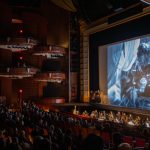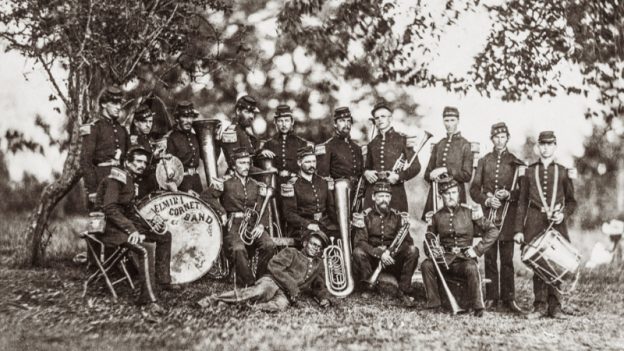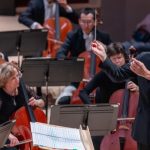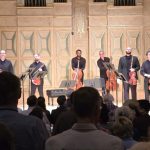Mark Gresham | 1 OCT 2025
When the first notes of a bugle pierced the Virginia dawn in 1861, they carried more than orders; they carried a nation’s tensions, divisions, hopes, and grief. In camps from Pennsylvania to Tennessee, the thunder of drums and the blare of brass echoed through fields scarred by conflict, forming a soundtrack to a war that would pit brother against brother. It was an era when music—whether sung in the privacy of a parlor or played on a battlefield—shaped identity, morale, and memory in ways as profound as the battles themselves.
In the North, songs like “The Battle Hymn of the Republic” and “When Johnny Comes Marching Home” became anthems of Union sentiment. “The Battle Hymn of the Republic,” with its stirring lyrics by Julia Ward Howe and music adapted from the tune, “John Brown’s Body,” became a rallying cry for Union troops, evoking powerful imagery and religious fervor that resonated deeply with Northern audiences.
“When Johnny Comes Marching Home”, composed by Louis Lambert (a pseudonym for Patrick S. Gilmore), was another popular Union song. Its upbeat melody and hopeful lyrics about soldiers returning home boosted morale and comforted families longing for their loved ones’ return. The song’s popularity was such that it became a staple in both military and civilian settings.
In the South, “Dixie” emerged as the Confederacy’s unofficial anthem. Interestingly, despite its association with the South, “Dixie” was written in 1859 by a Northerner, Daniel Decatur Emmett, a white “blackface minstrel” songwriter and performer from Ohio, as a lively “walk-around” number for Bryant’s Minstrels in New York, where it was first performed before being embraced by Southern audiences as a symbol of their identity and resistance. Its catchy tune and nostalgic lyrics about the Southern way of life made it a favorite among Confederate soldiers and civilians alike.
Though Emmett was a Union supporter, the song’s nostalgic evocation of the South was quickly embraced by Confederates and became their unofficial anthem, played at Jefferson Davis’ inauguration in 1861. Abraham Lincoln, however, also claimed the song after the Union victory, calling it “ours by the capture.” Today, its minstrel origins and Confederate ties make it controversial, and in many contexts, restricted, avoided, or banned outright.
Another significant Southern song was “The Bonnie Blue Flag,” written by J.R. Shannon. The song’s lyrics celebrated the single-star flag associated with the Confederate States of America at the start of the American Civil War in 1861, which became a symbol of Southern pride and unity. Its popularity rivaled that of “Dixie” during the early years of the war.
Brass bands were integral to both Union and Confederate armies. These bands not only provided entertainment but also played a crucial role in military operations. They performed during drills, marches, and ceremonies, boosting troop morale and fostering a sense of unity among soldiers.
The Union’s 26th Pennsylvania Volunteer Infantry Regiment, known as the Keystone Regiment, boasted a brass band famed for its polish. The Confederacy’s 1st North Carolina Regimental Band, meanwhile, became a cultural cornerstone for Southern troops.
These bands were also a part of the broader American brass band movement, which gained popularity in the mid-19th century. The movement was characterized by the formation of brass bands in towns and cities across the United States, which performed at public events and contributed to the development of American musical traditions.
The music of the Civil War had a lasting impact on American culture. Songs like “The Battle Hymn of the Republic” and “Dixie” continued to be performed long after the war ended, serving as reminders of the nation’s tumultuous past and the enduring power of music to unite and divide. Brass bands, which had flourished during the war, continued to be a significant part of American musical life in the post-war years. They played at public events, parades, and celebrations, helping to shape the musical landscape of the late 19th and early 20th centuries. Moreover, the war’s music influenced the development of various musical genres, laying the groundwork for many of the musical traditions that would define American culture in the years to come.
The music of the Civil War era was more than just entertainment; it was a reflection of the nation’s struggles and hopes. From the battlefields to the parlor rooms, music offered solace, inspiration, and a voice for those enduring one of the nation’s most turbulent and challenging periods in American history. Its legacy continues to resonate, reminding us of the power of music to capture the human experience and shape the course of history. ■

Read more by Mark Gresham.
RECENT POSTS
 The Atlanta Opera conjures a night of enchantment as Glass’ score reawakens Cocteau’s ‘La Belle et la Bête’ • 20 Nov 2025
The Atlanta Opera conjures a night of enchantment as Glass’ score reawakens Cocteau’s ‘La Belle et la Bête’ • 20 Nov 2025 Jan Lisiecki on discipline, performance psychology, and programming for his Spivey Hall recital • 17 Nov 2025
Jan Lisiecki on discipline, performance psychology, and programming for his Spivey Hall recital • 17 Nov 2025




.png)